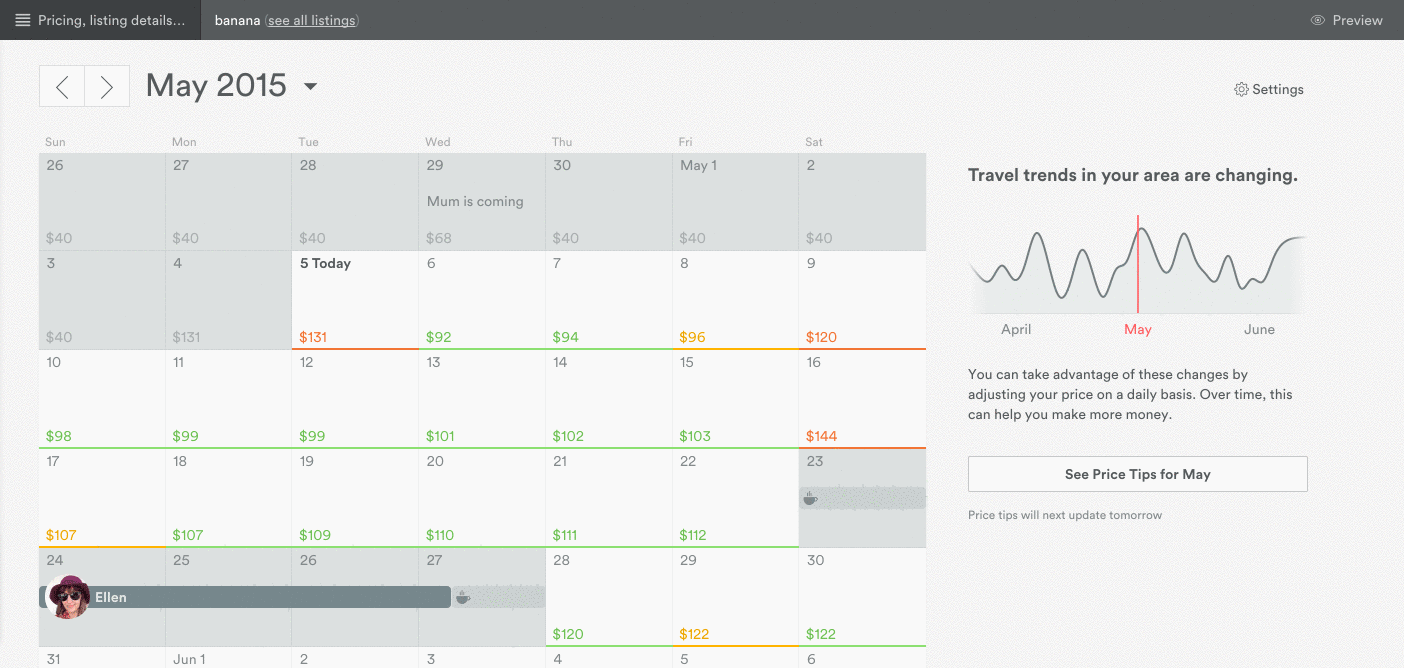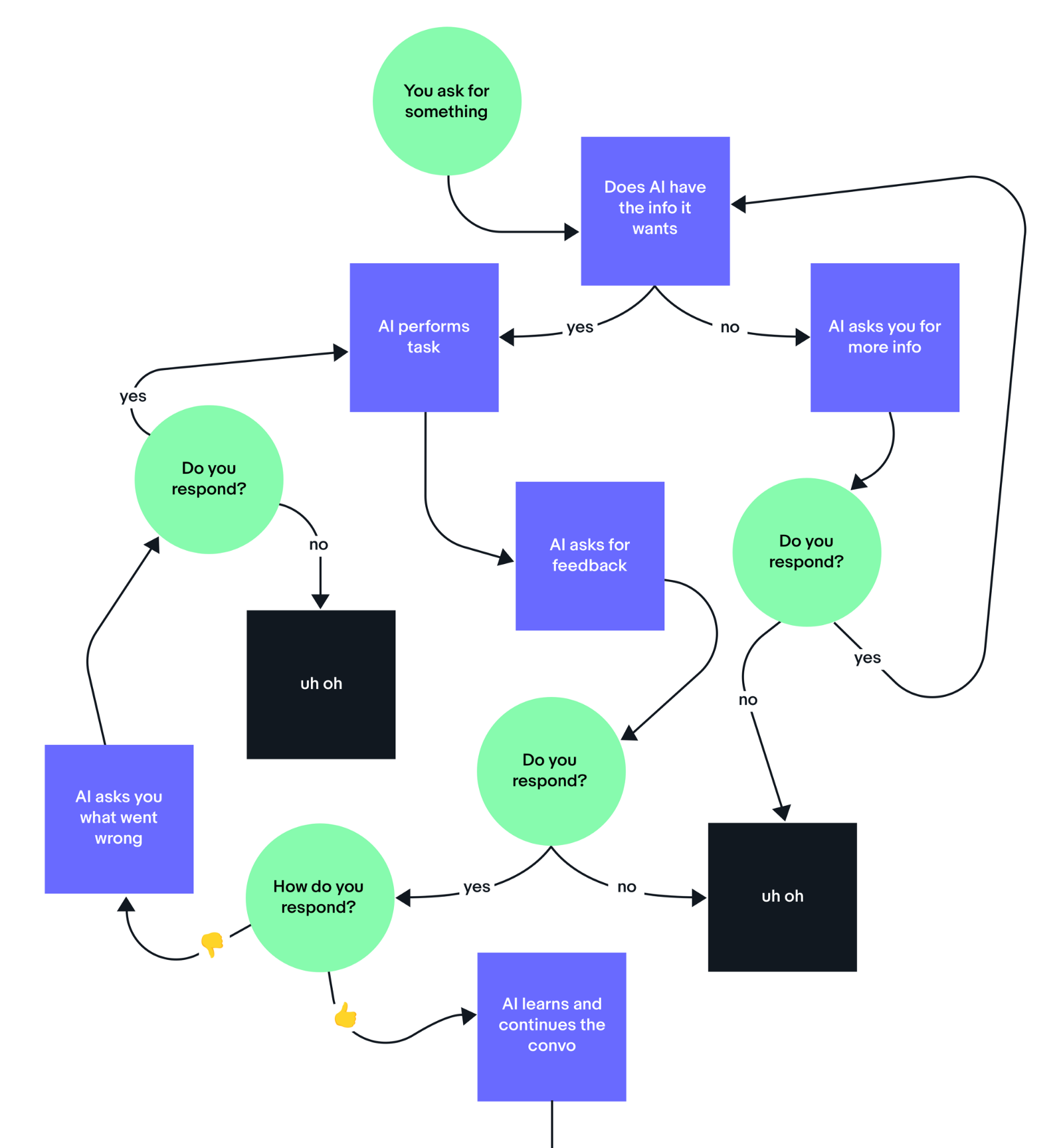Image — @skippuku (twitter)
If you’re in the tech industry at this point of time, my hunch is that you have heard something about Artificial Intelligence (AI) or User Experience (UX). As AI continues to become more understood, its becoming less confined to the domain of developers and data scientists. As Designers/ Tech enthusiasts/ Entrepreneurs/ World Changers its important we start or continue to think beyond the devices and interfaces we currently use. To continue improving the world, we shouldn’t become limited to what currently exists. We should be looking for inspiration in everything, and be thinking of the world as an interface.
Jake, awesome intro, but what is AI? Is that flying cars and stuff? Good question, lets find out with this video by Peter Diamandis.
In conclusion to this video, as I write this in 2017 AI is controlled, limited, evidence based and a form of code. AI is not alive, conscious, Skynet, creative, ambitious or empathetic. Lets have a look at some case studies of companies that are using various forms of AI to improve their UX.
Airbnb
Image — Airbnb https://www.airbnb.com
When you think of Artificial Intelligence, your first thought isn’t exactly renting out rooms or flats. With AI and a data-driven culture, Airbnb have revolutionalised not only the hospitality but also the way the industry engages with AI. When you go on holiday, regardless of location or type of accommodation — your likely to be paying a price that’s based on a demand vs supply model.
Airbnbs ‘Price Tips’, is an AI tool that “lets Airbnb hosts see exactly where they should set the price of their property on a day-by-day basis to make it most likely to be rented” — Airbnb. With this tech, property hosts are able to see a calendar that displays the price they have set for their asset every day. If hosts have priced their asset right, the dates appear green — if the price is too high, price tips displays the price red. With this information hosts can use a slider adjust the price and find the ‘sweet spot’ — a price low enough that it’s likely to be rented, but high enough that you’re not leaving money on the table.
Price Tips AI algorithm is based on the massive amount of data Airbnb receives and processes using the company’s open AI tools. There’s a host of different factors that go into the price tip model, including listing type, location, price, availability, and how far away each date is from the current time. With all this data, Price tips can automate calculation and thinking processes for Airbnb users and in turn make the experience more intuitive and transparent.
Online / Inproduct Support Chat Bots
Chatbots and other modern interfaces are becoming more human every day (Well atleast the way they feel) — This is due to the ‘Hollywood Formula’. The Hollywood formula is a formula to help create meaningful stories by Martin Stellinga . Think about how Disney characters create relationships with their users. They manage to establish these large scale relationships with diverse demographics. Each of Disneys characters have unique personalities that are displayed across various mediums (apps, books, films ect). Imagine if we could become experts in creating these human narratives across our interfaces and constitute similar connection for our users. If AI is the new UI, then personality could be the new UX.
Many websites/products offer their customers the opportunity to chat with a support representative while browsing. *Plot twist* Although they may feel human, not every company actually has a live person on the other end. Often you are communicating with primitive AI. What’s interesting about this is that these chat bots need to be skilled in interpreting natural language — a rather difficult hypothesis.
Netflix
Example of face and full-body features to determine the focal point of the image — Image : Netflix https://www.netflix.com
In a multi-device world, designers of all kinds have to come up with a large amount of variations in content/graphics to cater for many mediums. This process takes time… lots of it — Well, not for Netlfix. Netflix and many other companies have handed over this ideation phase to AI.
Netflix discovered early how much its visuals influence user groups and their decisions to watch particular content. To take advantage of this conclusion, Netflix developed an AI algorithm to crop characters from images and apply stylized movie titles to create a poster unique to a users interests, languages and location — cool hey? Alongside this, the algorithm also A/B tests the effectiveness of each design on Netflix’s users to self train and optimize its content. When AI handles such tasks, the design team can focus more on understanding the user journey and refining these rules.
AI is not only limited to the big players, smaller companies like RealEyes are also taking advantage of such advances in technology.
Its not reason that drives human decision — its emotion. We know that humans are motivated by their emotions, with emotion stimulating the mind “3,000 times faster than cognitive thought” — Tier 360. To help organizations objectively and accurately measure human emotion RealEyes offer forms of technology that read human expression through facial recognition algorithms.
RealEyes software records human emotion through a webcam and makes sense of it with an underlying AI algorithm. This tech is great for things like usability testing — when testing a product you may find that users are able to use and understand it (good), but are experiencing some form of anger emotion in response to a certain form of messaging (not so good). Without having measured users emotional responses, the product could have been deployed and have resulted in customer upset. Other benefits of this tech could include the automation of work flows by efficiently analyzing and coding video / image data and more.
Image — RealEyes https://www.realeyesit.com/Media/Default/Videos/Video_Poster.jpg
So you have read through some case studies about how AI is being used to improve UX, but id love to add a final example that’s a bit different. This example is about the way AI can and will change the way we build our products, but potentially also work to improve relationships.
Pix2code
AI could be your new front end developer — yes front end developer, awesome hey? Pix2code is a form of intelligence that can generate code from screen shots of your interface. A tool like this could help bridge the gap between UI/UX designers and front-end developers, but not replace either. Check it out in action.
While the code isn't that great right now, its important to understand that this is a proof of concept. As the AI gets more training its only going to become smarter and more efficient. From this moment on, it will only become better.
Lets Talk Data. Data = Intelligence, No Data = No Intellegence.
Image —Fabien Girardin : A feedback loop that will feed the algorithm with learning material (data).Its quite easy to get carried away with AI and the adequacy of this system in UX. Yet, its important to remember that the results it provides users is only as proficient as the data its learnt from. The quality of the data matters to AI. The more sophisticated the information gets, the better informed the AI is, and thus the better the resulting decisions.
Its quite easy to get carried away with AI and the adequacy of this system in improving experiences. Yet, its important to remember that the results it provides users is only as proficient as the data its learnt from. The quality of the data matters to AI. The more sophisticated the information gets, the better informed the AI is, and thus the better the resulting decisions. Supplying the AI with undeveloped information could prove to be disastrous — large holistic data sets are a must.
Although a scary thought, we may need to design experiences that incentivise the engagement that can help improve/train our AI. We may need to prioritise AI over our users by taking one step back with our UX, to take two steps forward with our AI. The more unpredictable the experience, the smarter the AI can become, and therefore; we need to be okay with launching premature experiences to our users to collect data. As designers we need to solve the friction between getting the info the AI needs to know and the info our users are willing to provide.
The flow diagram below helps illustrate a feedback loop between AI and a humans.
Image — Elaine Lee (AI Designer at Ebay)
Conclusion
The world is rapidly moving towards AI. As designers we have the opportunity to define how our relationship with AI will play out. Its an opportunity for us all to collaborate with data scientists (and other stakeholders) to innovate, and create exciting meaningful experiences that will benefit our users and the future of UX. Remember, data is the staple of experiences with systems that learn. The combination of data, learning algorithms and UXD can trigger an evolution of memorable experiences for our users.







